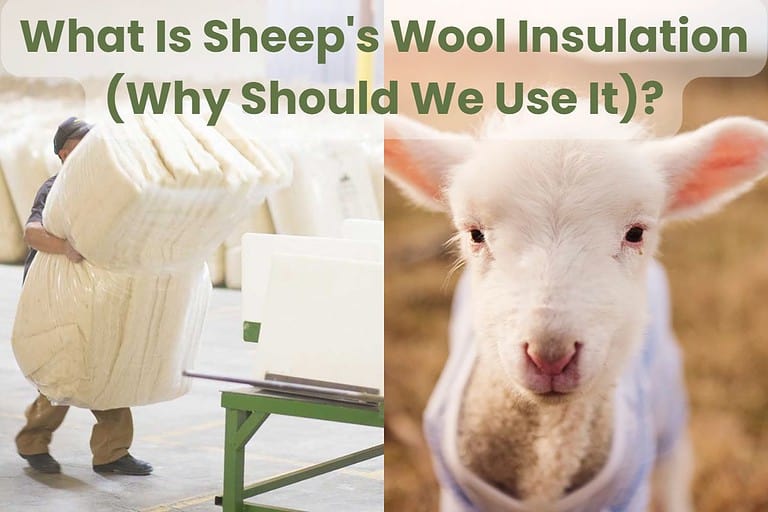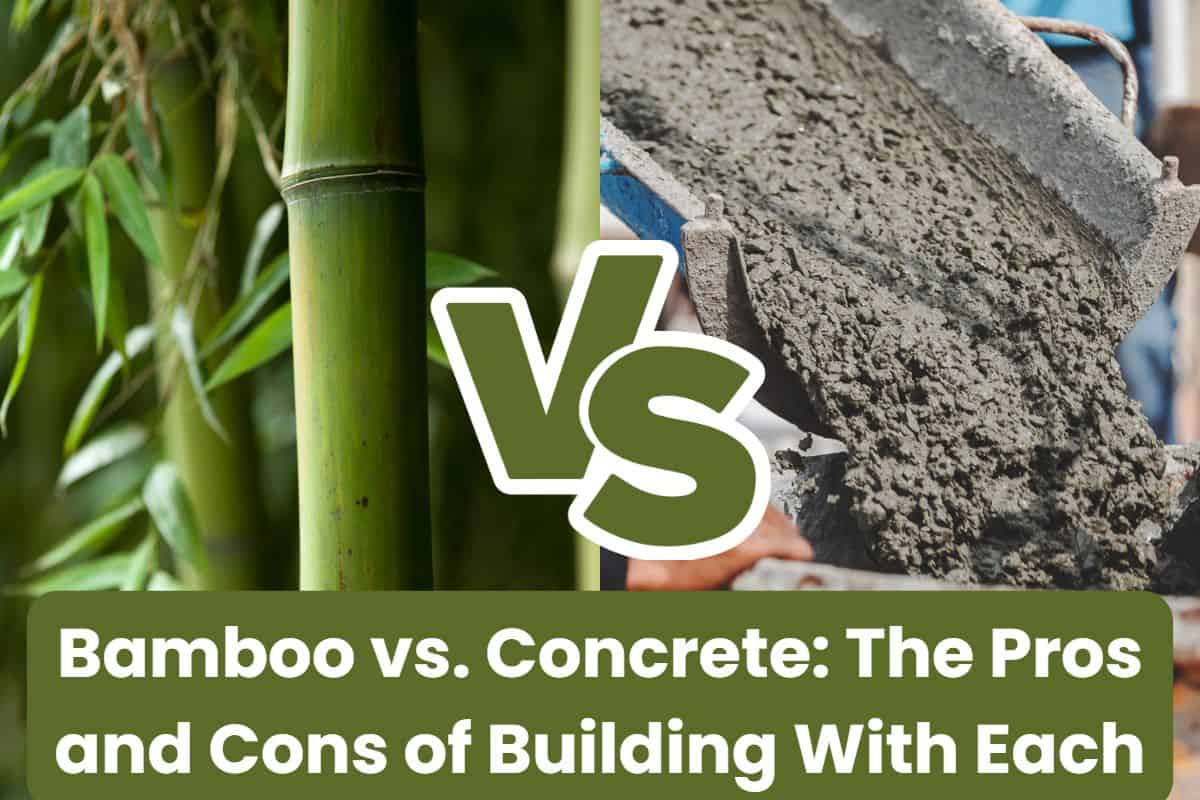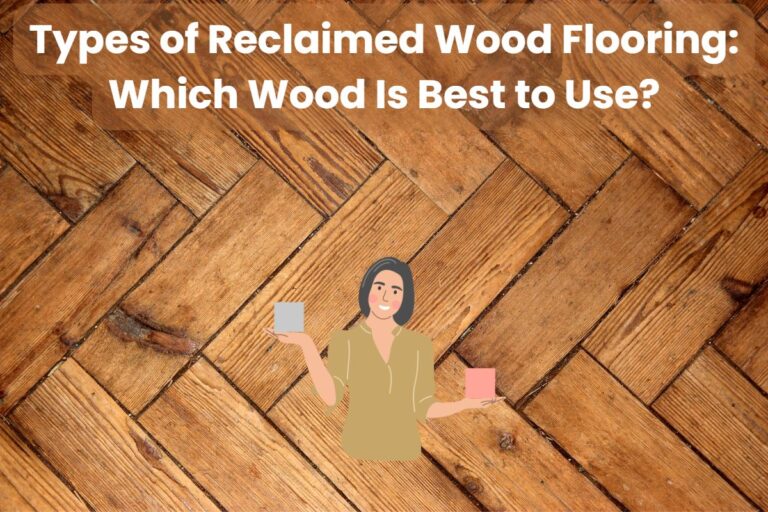All About Straw Bale Homes: Pros and Cons (Is It Efficient?)

With the world’s population growing and resources diminishing, more people are looking for sustainable building methods.
A straw bale house offers many advantages, including energy efficiency and cost savings. But a straw bale building also comes with some drawbacks.
Straw bale homes are highly energy-efficient because of their 18-inch (45 cm) wide walls, providing excellent insulation from heat and cold. They’re highly durable and fire-resistant. Plus, straw is a low-cost, locally sourced, biodegradable, and renewable ecological building material.
In this article, I will provide an overview of straw bale homes and examine the pros and cons of building one.
I’ll also explore its energy efficiency, cost savings, and maintenance requirements.
The Pros of Straw Bale Construction
Straw bale homes are gaining traction in the construction industry for their potential to reduce energy costs and lessen our environmental footprint.
Straw Bale Homes Are Cost-Effective

The most obvious advantage of building with straw bales (not to be confused with hay bales) is the cost savings associated with this construction material.
Wheat straw and similar materials have been used as effective thermal insulators for centuries, e.g., in straw-thatched roofs and other thatch roofing. Straw bale insulation is still relatively inexpensive compared to other materials with similar insulating properties.
Although some people might find the idea of a straw bale house dubious, it’s actually quite durable and sturdy. Besides, it’s easy to find straw bale insulation material, as most areas have access to straw bales from cereal grain crops like wheat, oats, rye, barley, and buckwheat.
In addition, since straw is a renewable resource, there are no worries about running out of supplies or being unable to replace them if needed.
Straw Bale Buildings Are Highly Energy Efficient
The most well-known benefit of straw bale construction is its exceptional thermal insulation. Straw bale insulation keeps buildings warmer in winter and cooler in summer, reducing energy consumption for heating and cooling systems.
The reduced energy consumption means lower utility bills for homeowners who choose this building method. Strawbale construction makes it possible to build a home that’s both comfortable and economical to operate all year round.
A straw bale wall is pretty thick, around 18 inches (45 cm) wide, and well insulated. You can also paint or plaster straw bale walls to match your taste.
All these features increase the R-value of straw bales by up to 35-40 and provide far better protection against heat loss than other construction materials.
Additionally, because the straw bale insulation is all-natural, it reduces the environmental impact of synthetic materials or chemical treatments used in many other forms of homebuilding.
Straw Bale Homes Are an Environmentally Friendly Alternative
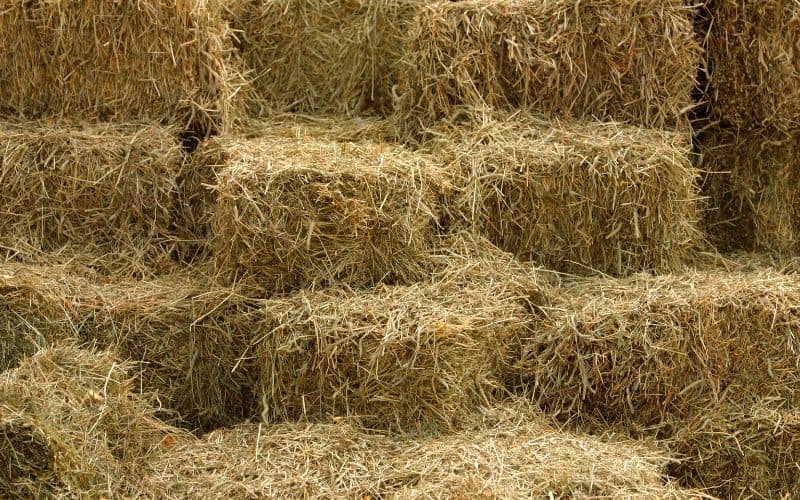
Straw bale construction is a highly environmentally-friendly alternative to traditional buildings. It’s one of the most sustainable housing methods available, and many people choose it for that reason.
Straw bales are large bundles of straw or other plant material stacked in layers to form bale walls. This type of construction has been around for centuries but has recently gained popularity among sustainability-minded individuals because it uses natural, locally-sourced, renewable materials.
As the building material is organic, straw bales offer natural ventilation, providing a comfortable living environment all year round.
Straw Bale Homes Are a Biodegradable Option
Biodegradability is an important concept to consider when assessing the efficiency of straw bale homes. Straw bales are composed of grasses, grains, and other natural materials that microorganisms and other living organisms can break down.
As such, when straw bales used in construction begin to break down, they can be easily recycled back into the environment. This process helps reduce waste in landfills and preserves valuable resources.
Additionally, these biodegradable materials provide insulation for homes, thus requiring less energy consumption for cooling and heating needs.
Straw Bale Homes Have a Unique Style

One of the most significant privileges of building with straw is the opportunity to create a unique, attractive, and eco-friendly home. Building a house that reflects your personality and style while contributing positively to the environment is possible.
Straw bale homes are unique in a couple of ways.
The straw used to construct homes is partially dried out and contains a high percentage of moisture. The moisture makes the straw bale walls less likely to crack or warp.
Straw bale homes are sometimes built using a structural insulator known as an insulating concrete form (ICF). Since the ICF contains foam, it’s a very energy-efficient construction method.
The fact that a straw bale wall is well insulated makes it a good choice for homes requiring low utility bills.
From traditional farmhouse designs to contemporary styles based on timber frame or post and beam structural elements that provide structural support, straw bale construction allows for flexibility in architectural design and creative approaches to interior and exterior layouts.
Straw Bale Houses Have a High Fire Resistance
Finally, the straw serves another purpose, acting as a natural fire-retardant barrier between the interior and exterior walls. This fire resistance can be especially beneficial in areas subject to wildfires or other natural disasters.
Straw bales are naturally fire resistant due to their high levels of silica content, which is beneficial in areas prone to wildfire outbreaks. Thanks to their low flammability, it takes longer for the fire to reach the interior than other traditional building materials.
The Cons of Building a Home With Straw Bales
Before you take the plunge and build a straw bale home for yourself, it’s essential to understand the cons of this unique building style.
Straw Bale Houses Are Vulnerable To Moisture Damage
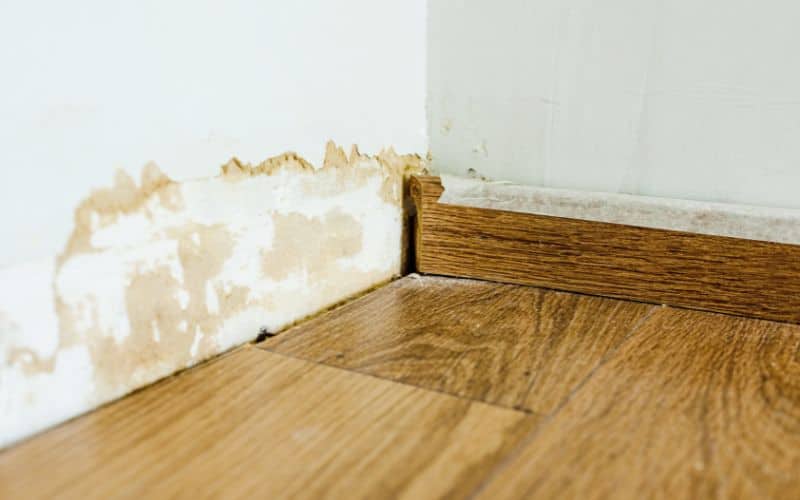
The most significant disadvantage of a straw bale home is its susceptibility to moisture damage if not adequately sealed and insulated. Excess moisture can lead to mold growth, insect infestations, and rot if not appropriately addressed during construction.
Additionally, the walls need periodic maintenance, such as re-cementing or replacing sections of damaged plaster every few years to keep them in good condition.
Straw Bale Houses Are Vulnerable To Pest Infestations
It’s important for homeowners looking into straw bale construction to know that these homes are more susceptible to insect infestations. The stacked straw provides easy access for insects and rodents to food sources such as stored grains or fruits inside the house.
Mice, termites, and ants are the most common pests in straw bale homes. Here are a few tips to keep your home free of these unwanted pests when constructing a straw bale home.
Keep food sources and stored grains inside cabinets or closed-off areas.
Check for entry points and seal them off appropriately.
Keep the straw bale walls and ceilings dry.
Regularly inspect your home for signs of infestation.
Straw Bale Houses Require Regular Maintenance
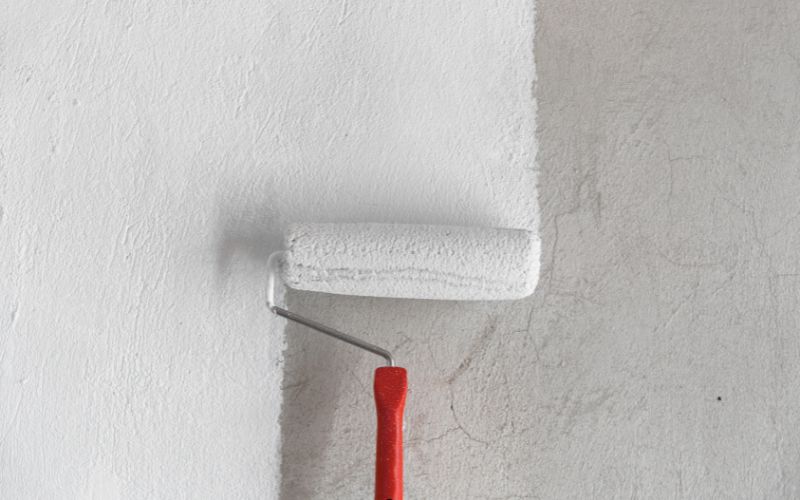
One of the major cons of using straw bales for construction is that they need far more maintenance than conventional forms of construction. To avoid mold or mildew growth, you must ensure the moisture content of the straw is always low.
Proper protection from moisture is essential for the long-term durability of a straw bale house. Keeping the straw walls dry requires regular, timely maintenance.
Also, straw bale construction can’t protect you against extreme weather conditions like floods or hurricanes.
Straw bale houses typically require more upfront costs than their traditional counterparts due to higher material costs. You have to plaster the walls to create an airtight seal, and additional charges may include roofing materials and windows.
Climate Considerations May Affect Your Straw Bale House
Before building a straw bale home, it’s important to consider your area’s climate. Depending on your location, there may be some factors that could affect your decision.
The high R-values of straw bale insulation make it ideal for climates with harsh winters and hot summers, as they can effectively keep heat out during summer and retain heat in winter.
However, suppose you live in a humid environment or an area prone to heavy rains. In that case, you might want to look into other construction materials. Straw absorbs moisture, which can cause the material to rot.
Additionally, areas prone to wildfires must also take extra precautions when building with straw, as it will burn in the wrong conditions.
You Cannot Claim Home Insurance on Straw Bale Homes
Since most insurance companies consider straw bale houses unusual or experimental building structures, coverage may be limited or more expensive.
Building a straw bale home can be an attractive and cost-effective option for green construction, but it is important to note that the building might not qualify for standard home insurance.
In fact, even though these homes are becoming more popular among eco-conscious homeowners, they are generally not considered insurable due to their unique design and materials. Most insurance companies do not cover the risk associated with straw bales.
Note: The insurance cost will also depend on the value of your home. Costs are usually higher when you live in an area with a greater fire or wind damage risk.
It’s Hard To Find Straw Bale Builders
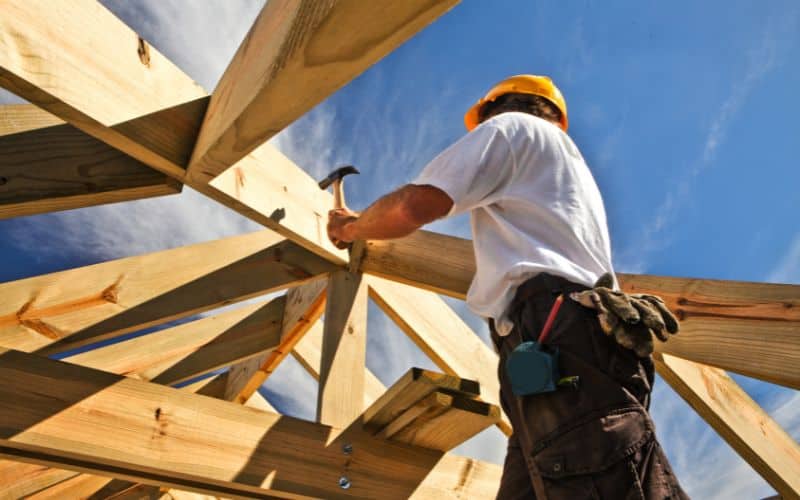
Building your own straw bale house is an innovative, sustainable way to put up walls, but it’s challenging. This type of construction requires careful planning and the ability to conform to building codes, which can be daunting even for experienced contractors.
A knowledgeable green home builder can help you ensure your plans are on track, meet the local building codes, qualify for a building permit, and save you time and money in the long run.
An Overview of Straw Bale Buildings
Straw bale homes are not new by any means. Many cultures traditionally used straw as a building material before the invention of newer materials like steel and cement. However, these traditional homes are slowly becoming more appealing.
Straw Bale Home Basics
A straw bale building utilizes harvested stalks of wheat as its primary building material. Unlike a traditional stick frame or log structure, these homes are framed with large bundles of tightly packed straw.
The thick straw bale insulation provides effective protection from the outside environment.
A traditional straw bale building uses layers of tightly packed hay or grain stalks made from loose straw by a mechanical baler to form thick walls. The walls are then covered with plaster or stucco and left to dry, creating an airtight seal that keeps the house warm in winter and cool in summer.
A Quick History of Straw Bale Construction
Straw bale construction has been around for centuries but is becoming popular again. The earliest evidence of a straw bale house dates back to the late 1800s in Nebraska when more durable structures were slowly replacing sod houses.
Fast forward a few decades, and people commonly used straw bale insulation in homes built out of wood or adobe. They offer great insulation values, and you can easily manipulate them into aesthetically pleasing designs that efficiently reduce energy costs.
Building Processes, Regulations, and Codes
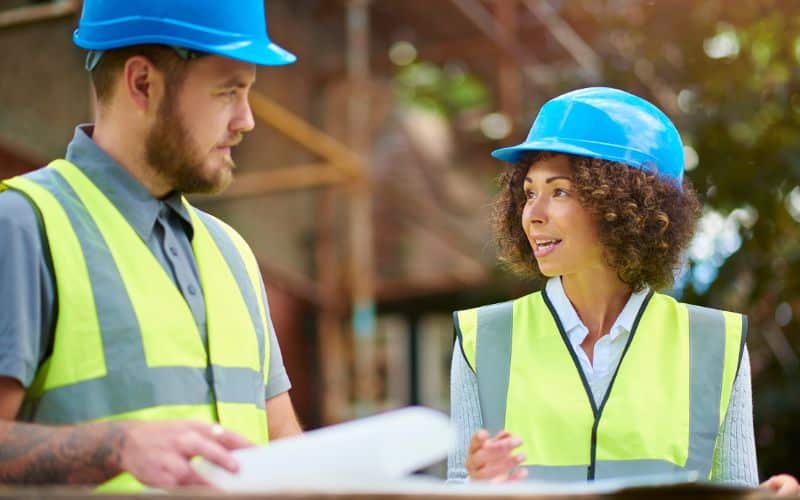
A straw bale building is an innovative, sustainable building alternative. However, building regulations and codes often concern those wanting to build this type of home.
The first step is understanding what local building regulations and codes apply to your area. These will vary depending on your region or municipality.
For example, the California municipality guidelines show the minimum wall thickness of straw bale homes needs to be 13 inches (33 cm) instead of the standard 18 inches (45 cm).
Once you know the rules, you must design the house accordingly to meet all necessary safety requirements. The requirements include ensuring adequate insulation, ventilation, and fire protection systems while adhering to energy efficiency standards.
Are Straw Bales More Efficient Than Traditional Construction?
Straw bale construction is becoming increasingly popular as an eco-friendly, low-cost building technique. But are they as efficient as we think?
The material used to construct a straw bale house is cheaper than traditional materials. Straw bale insulation is also more effective than many conventional options, offering energy savings over the long term.
Additionally, straw bales are lightweight, making them easier to transport and install than heavier construction methods such as brick or stone.
Straw bales are excellent at dampening sound transmission from outside sources, making them ideal for keeping noise out of residential areas.
Straw bale construction requires fewer resources to manufacture than a conventional building material like concrete or brick, reducing their carbon footprint without compromising quality.
Moreover, a straw bale house can be built quickly and relatively easily, even for novice builders!
Conclusion
Straw bale insulation has a high R-value, which keeps your home cool in the summer months and warm in the winter. It also provides natural soundproofing, so you don’t need to worry about outside noise disturbing your peace.
On top of these benefits, straw is often cheaper than other more common building materials like wood or brick.
Thus, straw bale houses are efficient and sustainable, with a wide range of environmental benefits.



